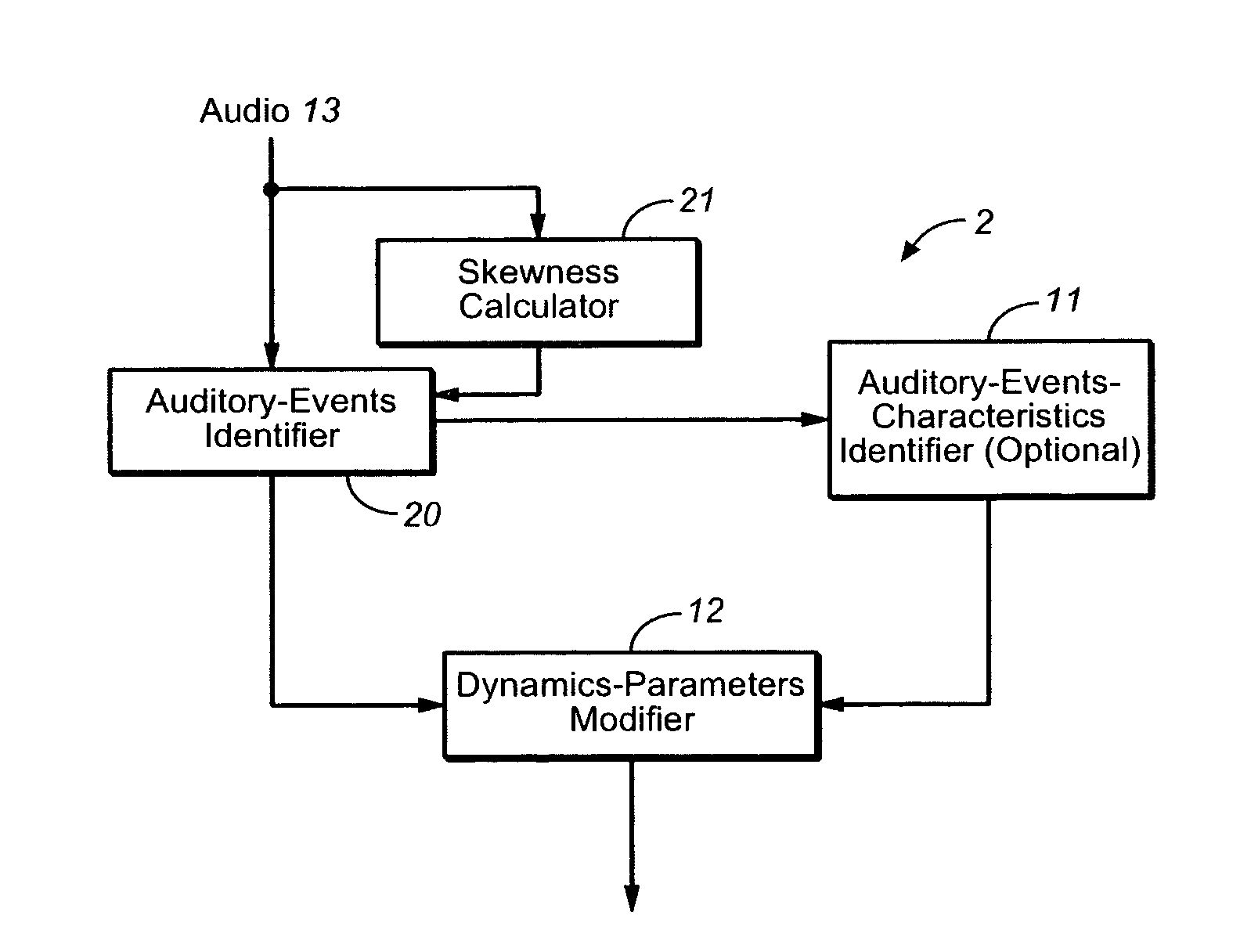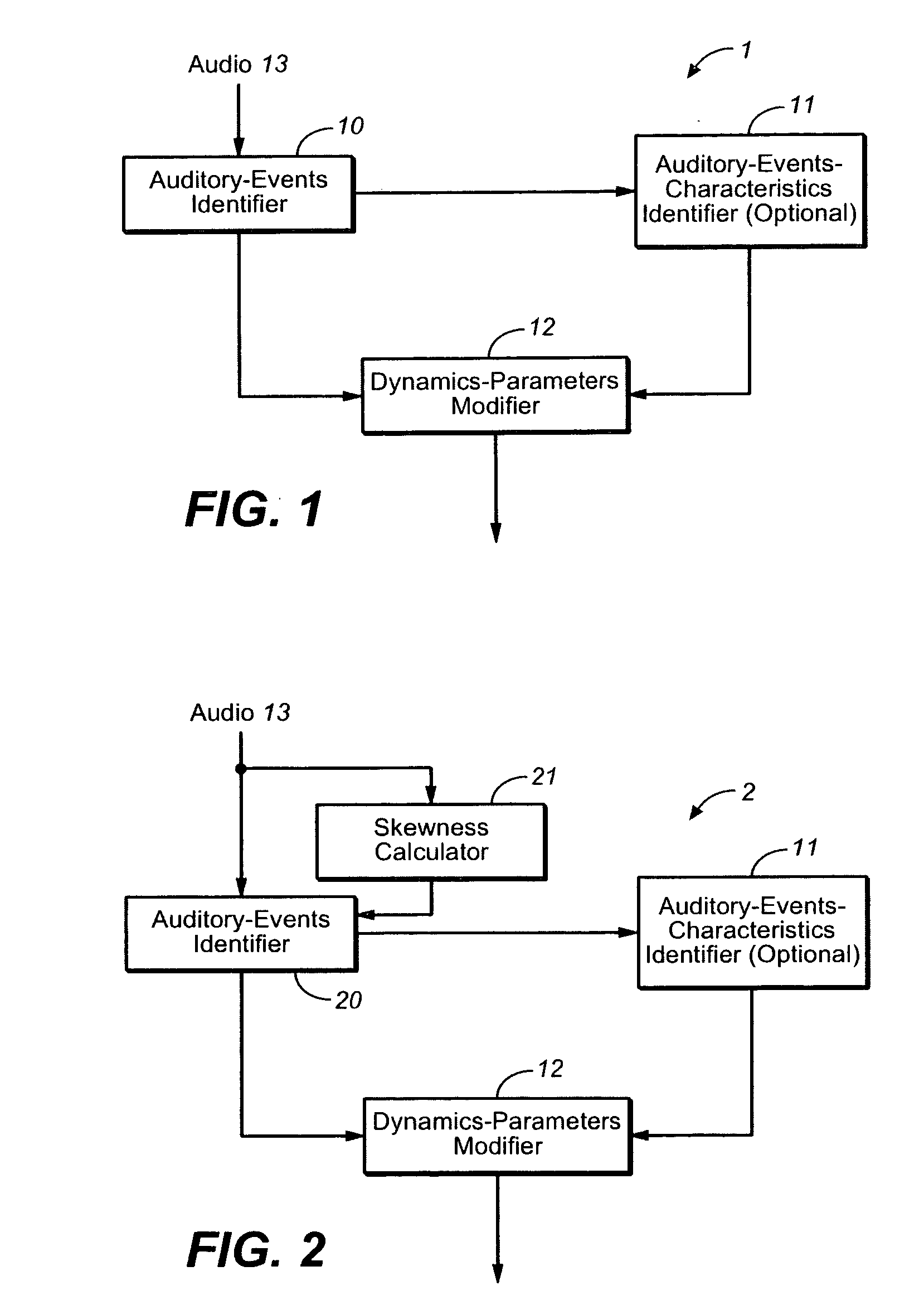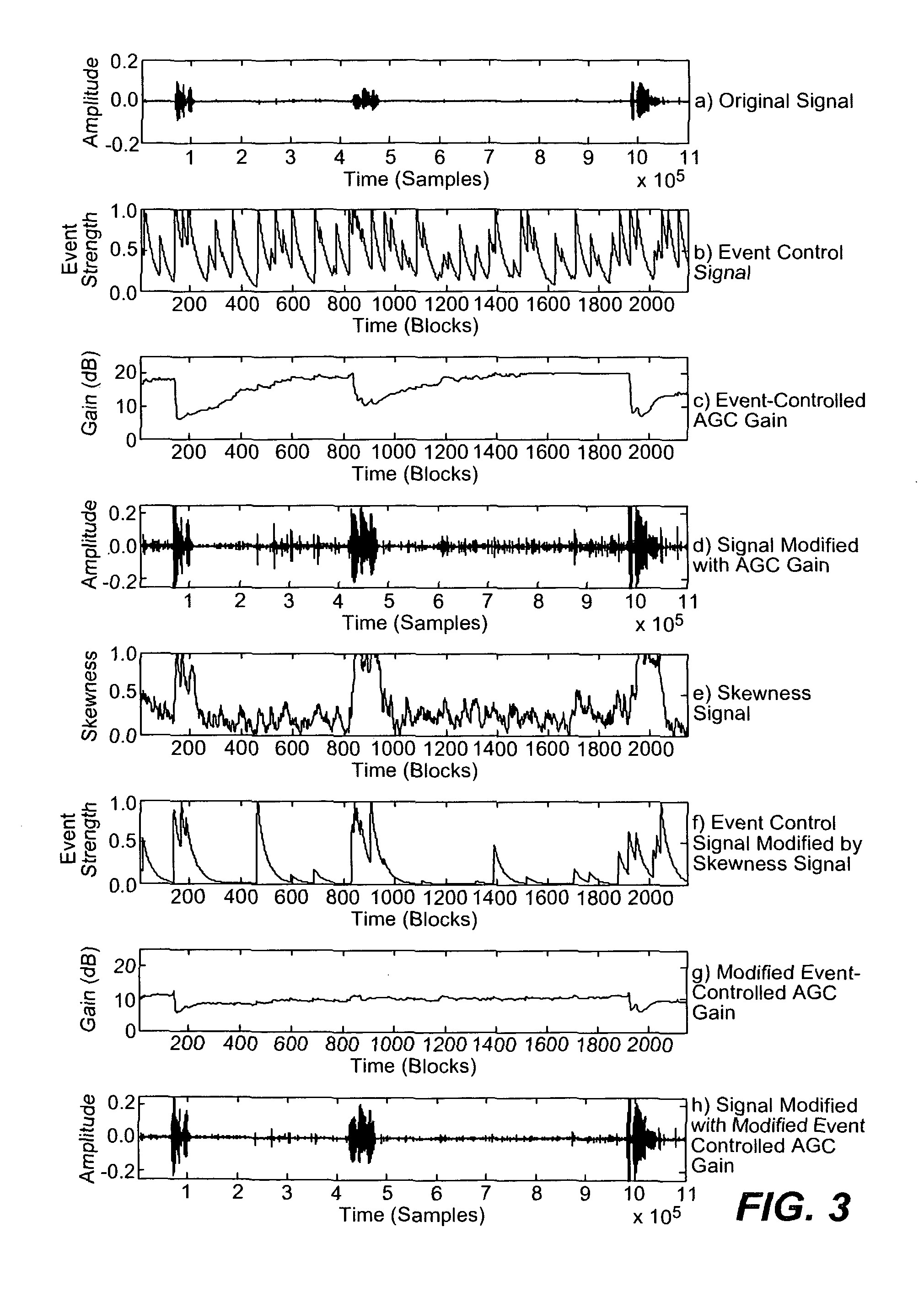Audio Processing Using Auditory Scene Analysis and Spectral Skewness
a technology of spectral skewness and audio processing, applied in the field of audio processing, can solve the problems of computational complexity, specialized and computationally demanding to consider practical techniques for sound separation, and the practical use of auditory scene analysis, so as to reduce the swelling of agc or drc processing level, and control the loudness of auditory events.
- Summary
- Abstract
- Description
- Claims
- Application Information
AI Technical Summary
Benefits of technology
Problems solved by technology
Method used
Image
Examples
Embodiment Construction
[0035]FIG. 1 illustrates a device 1 for analyzing auditory scenes and controlling dynamics-gain parameters according to Crockett and Seefeldt. The device includes an auditory-events identifier 10, an optional auditory-events-characteristics identifier 11 and a dynamics-parameters modifier 12. The auditory events identifier 10 receives audio as input and produces an input for the dynamics-parameters modifier 12 (and an input for the auditory-events-characteristics identifier 11, if present). The dynamics-parameters modifier 12 receives output of the auditory-events identifier 10 (and auditory-events-characteristics identifier 11, if present) and produces an output.
[0036]The auditory-events identifier 10 analyzes the spectrum and from the results identifies the location of perceptible audio events that are to control the dynamics-gain parameters. Alternatively, the auditory-events identifier 10 transforms the audio into a perceptual-loudness domain (that may provide more psychoacousti...
PUM
 Login to View More
Login to View More Abstract
Description
Claims
Application Information
 Login to View More
Login to View More - R&D
- Intellectual Property
- Life Sciences
- Materials
- Tech Scout
- Unparalleled Data Quality
- Higher Quality Content
- 60% Fewer Hallucinations
Browse by: Latest US Patents, China's latest patents, Technical Efficacy Thesaurus, Application Domain, Technology Topic, Popular Technical Reports.
© 2025 PatSnap. All rights reserved.Legal|Privacy policy|Modern Slavery Act Transparency Statement|Sitemap|About US| Contact US: help@patsnap.com



